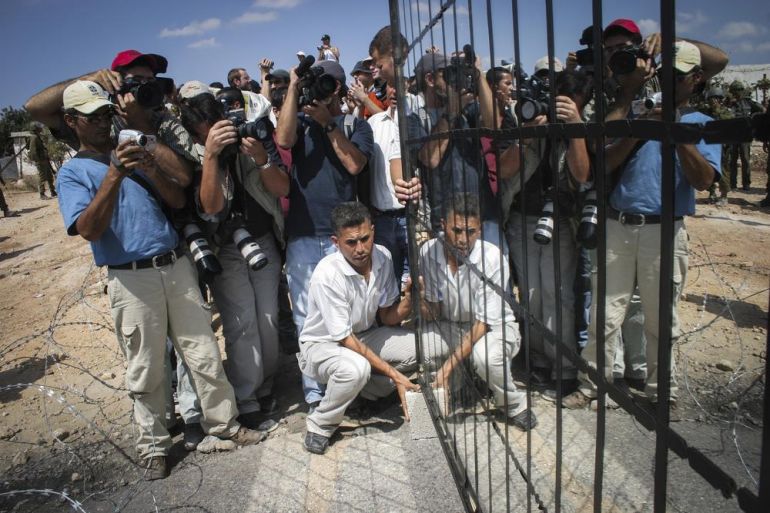In Pictures
A decade of anti-wall struggle
Palestinians and solidarity groups mark ten years of protest against Israel’s separation wall.

Bilin village, Palestine – This year marks the 10th anniversary of weekly demonstrations against the Israeli Separation Wall in the West Bank village of Bilin. That’s more than 500 Friday protests since Palestinians, usually accompanied by international and Israeli solidarity activists, began marching towards the barrier that divides their village.
On the other side of the wall lies the Israeli settlement of Modiin Illit. Like all settlements in occupied Palestinian territory, it is considered illegal under international law.
In 2007, an Israeli high court decision ordered the military to change the initial route of the wall, which had claimed more than half of the village’s lands. The army did not comply until four years later, but even the alternate route of the barrier deviates substantially from the Green Line, as does 85 percent of the wall’s route inside the West Bank.
Even this limited success came at a high price. Two of the village’s residents were killed in protests, and hundreds of protesters have been injured. In 2009, an Israeli soldier fatally shot Bassem Abu Rahmah in the chest with a high-velocity tear gas projectile.
His death was captured on video and appeared in the Oscar-nominated documentary Five Broken Cameras. A memorial garden of flowers planted in tear gas bombs was planted last year on the spot where he died. His sister, Jawaher Abu Rahmah died from tear gas inhalation following a protest on New Year’s Eve 2010.
Recently, one of the protest’s main leaders, Abdullah Abu Rahmah, once again faced an Israeli military court where he was accused of “ideological crimes” for his role in organising the demonstrations.
Under Israeli military law, any demonstration by Palestinians in the West Bank is illegal – whether nonviolent or otherwise. Abdullah has already spent 15 months in prison for organising “illegal demonstrations” and “incitement”.













